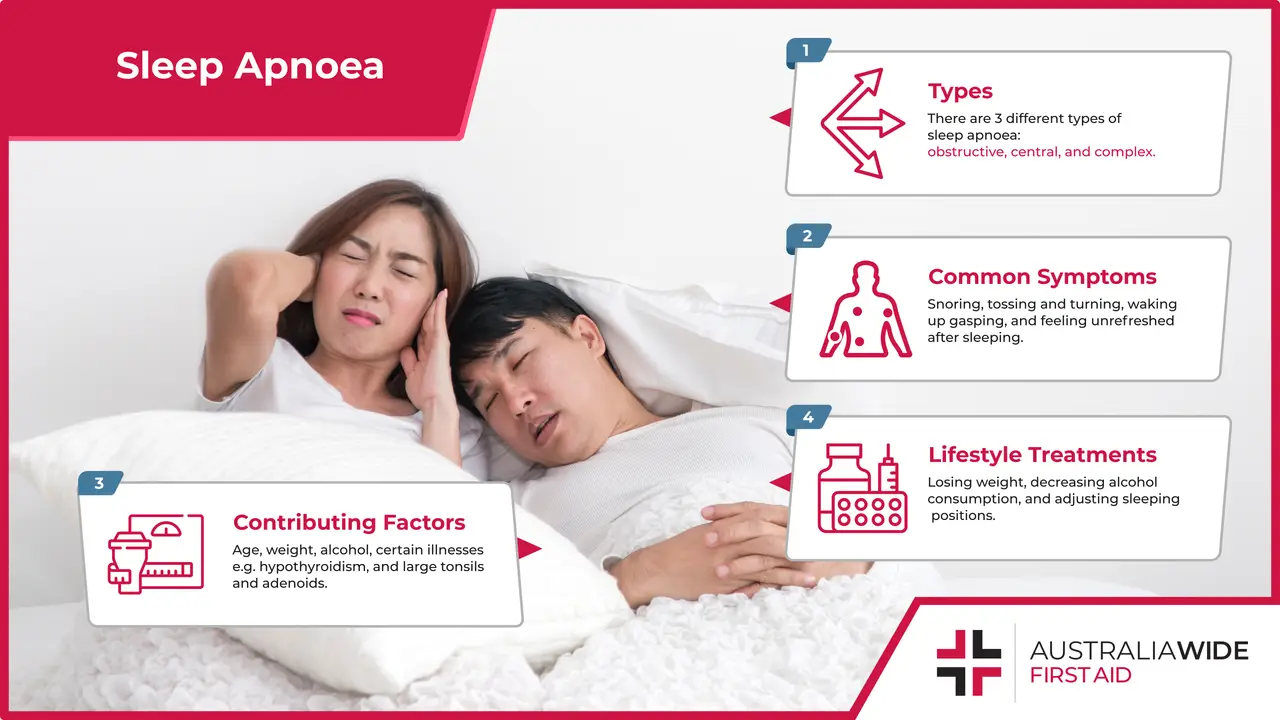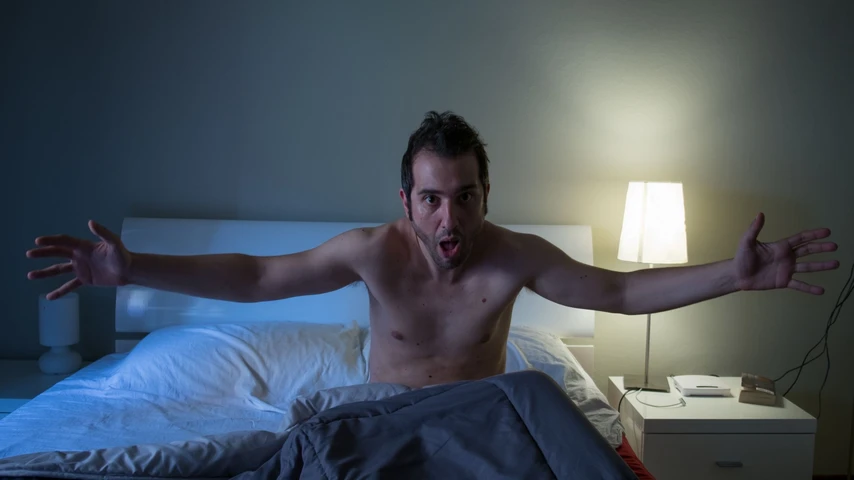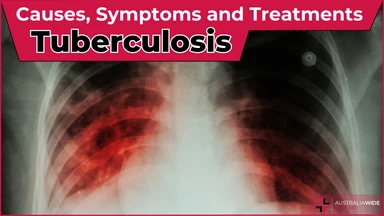Common Symptoms and Treatments for Sleep Apnoea


Sleep apnoea is a sleep disorder ranging from mild to severe in which breathing repeatedly stops and starts during sleep.
There are three types of sleep apnoea:
The most common form is obstructive sleep apnoea. This can affect anyone, but it’s more common in people who are middle-aged or older, who snore, who are above a healthy weight, or who have a history of sleep apnoea in their family.
On the other hand, central sleep apnoea is a rarer form of sleep apnoea and typically has more severe symptoms and complications. Then, if you have both forms of sleep apnoea combined, it’s called complex sleep apnoea.
Obstructive sleep apnoea is when a person’s throat is partially or entirely blocked while they are asleep. This blockage causes them to stop breathing for between a few seconds and a couple of minutes. The person is usually unaware that this is going on. These episodes, known as apnoeas, can happen many times a night.
Central sleep apnoea is when a person’s breathing stops while asleep, and there is a pause before breathing begins again. Unlike obstructive sleep apnoea, the airway isn’t necessarily blocked, and there is just a pause in breathing efforts. This is caused by a disruption to the brain mechanisms that control breathing patterns.
According to the Victorian Department of Health, about 5% of Australians have some form of sleep apnoea, including around 1 in 4 men over the age of 30. In the over 30 age group, this sleep disorder is about three times more common in men than women.
Anyone can get sleep apnoea, but certain contributing factors increase the chances of someone developing this sleep disorder.
A range of factors could cause someone to be more prone to sleep apnoea, particularly obstructive sleep apnoea. The common contributing factors to sleep apnoea are:
As a result of contributing factors, the person’s throat may collapse so much that not enough air can get through into the lungs. This causes the person to stop breathing until their brain realises what is happening and can send the person a literal wake up call. The person then briefly wakes up to get the throat muscles working again.
Unfortunately, this process can potentially repeat hundreds of times each night, causing the person to have a very unrestful and broken sleep. For people with central sleep apnoea, these episodes last longer and occur more frequently because the body does not attempt to breathe during these pauses.

It’s always best to seek professional medical advice. However, some common symptoms that might indicate that you have a form of sleep apnoea, such as:
If you often sleep with another person, it can be easier to identify whether or not you show signs of sleep apnoea. If you are sleeping with someone else, you could ask them to watch for any of the above symptoms.
If you usually sleep by yourself or can’t ask another person, you might like to talk to your doctor sooner for assistance in studying your sleeping behaviours.
Fortunately, there are many treatments available for sleep apnoea. It is highly treatable and usually includes specific lifestyle changes alongside an assistance device to use while sleeping.
For people with mild sleep apnoea or only a few symptoms, some lifestyle changes can help treat this sleep disorder. For example:
More active medical treatment is often required for people with moderate to severe sleep apnoea or lots of symptoms. For example:
As obstructive sleep apnoea is more common, these treatments are typically aimed toward this form of sleep apnoea. However, if you are suffering from central sleep apnoea, you might come across treatments such as:
If you think you might be suffering from sleep apnoea, you should go to your doctor for more in-depth testing. Your doctor may ask you to participate in an overnight sleep study to measure your sleep, breathing and oxygen levels during the night.
Untreated sleep apnoea has a negative impact on your overall physical and mental health. Apart from causing fatigue and concentration difficulties, it may lead to other health problems such as high blood pressure, heart attack, stroke and diabetes.
If you’re suffering from sleep apnoea, you might notice some of the following issues:
Treating sleep apnoea as soon as possible can help you sleep much easier and reduce the risks and complications. Many treatments are available, such as supporting weight loss or using a breathing assistance device while you sleep.
In some more severe cases, there is potential for the person to stop breathing for a more extended amount of time. If you are with someone who has stopped breathing, you should follow the DRSABCD action plan for first aid situations.
If you live with someone suffering from sleep apnoea, or another illness with the potential for the person to stop breathing, you should learn CPR in an accredited training program.

May 1, 2025
Pterygium, also known as surfer's eye, is an ocular surface disease characterised by a growth of limbal and conjunctival tissue over the cornea. Fortunately, you can practice many eye health habits to help prevent the development of pterygium and other risks.

April 3, 2025
Tuberculosis is a severe bacterial infection that mainly affects the lungs and other parts of the body, including the nervous system. This contagious disease can quickly spread in crowded areas when an infected person coughs, talks, or sneezes.

February 13, 2025
Melioidosis is a bacterial infection caused by Burkholderia pseudomallei, a microorganism found in soil and water. This infection is often underdiagnosed due to symptoms mimicking many other illnesses. As such, awareness is critical for those living or working in affected regions.